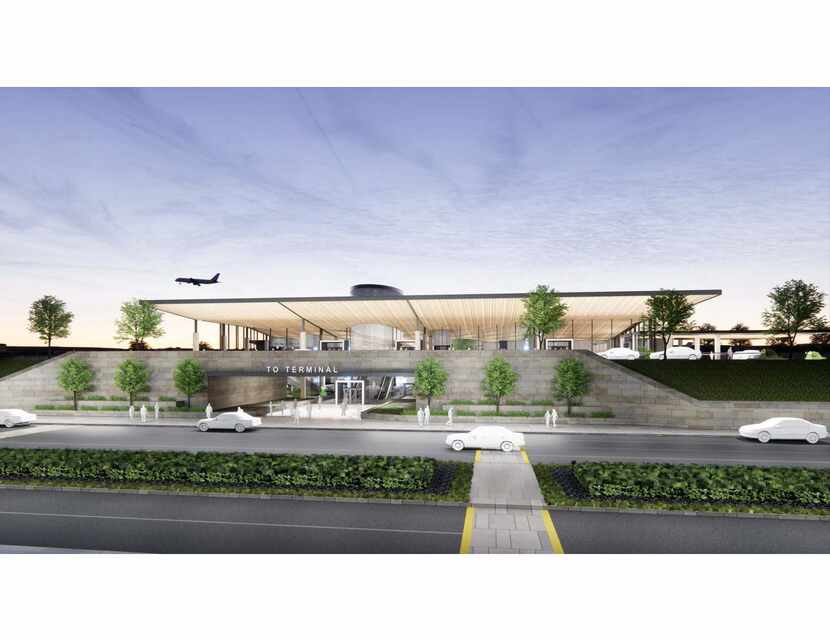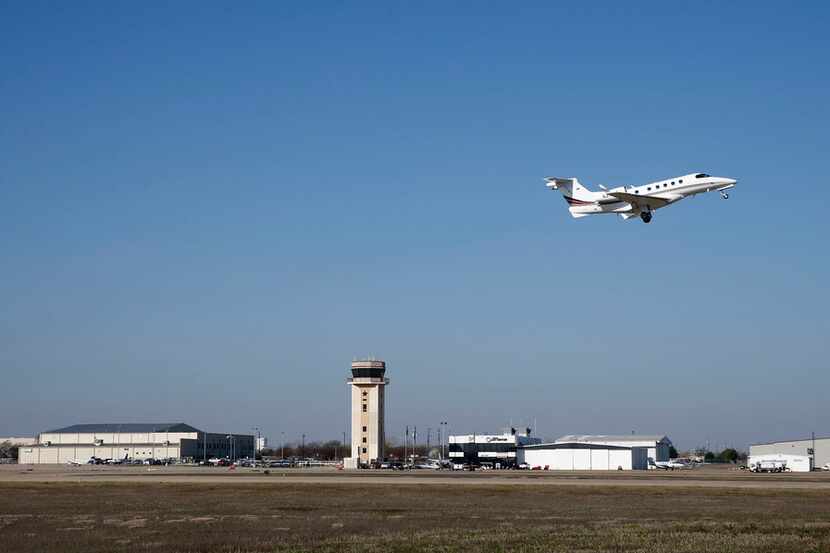If the McKinney City Council decides to move forward with a commercial air service terminal even though 58.7% of McKinney voters said no to the city’s $200 million bond item, there are other ways to fund the project, said Edward Shelswell-White of Sky Synergy, one of the city’s long-term airport consultants.
During a council work session and special meeting on Tuesday, Shelswell-White pointed to ways to fund the project without using general obligation bonds backed by city tax revenues. And, he said, while the council works to decide what to do next, Sky Synergy will maintain regular contact with their candidate airlines, both their commercial people who plan the networks and real estate people who decide which gates to lease and where to fly.
“They understand even better than we do that airport development anywhere tends to have an element of controversy, so what happened here May 6 is not unusual at all,” Shelswell-White said. “It’s not going to deter the airlines. It’s still back to a question of what does McKinney want from its airport in light of what happened May 6?”
Funding options
Shelswell-White pointed to typical ways to fund airport capacity projects, including some combination of federal and state funds, cash reserves on hand, airline development, public-private partnership development or bonds backed by general airport revenues or passenger facility charges.
He noted that since using city tax revenue (general obligation bonds) is off the table, that doesn’t mean any other one option is now the best option.
“Most often what you see these days is some combination once any federal and state funds have been applied,” Shelswell-White said. “Most often what we’re going to see is general airport revenue bonds and [passenger facility charges]. Our challenge is those are very heavily usually driven by passenger activity, which of course we have none to demonstrate.”
Mayor George Fuller echoed that some of the other funding options are more “speculative” and more “costly” from a finance point of view than general obligation bonds would have been.
“Like trying to borrow money when you don’t have history,” Shelswell-White said. “The reason for pursuing a city-run and -funded development initially was because it provided the best path to get the economic benefits of commercial service as fast as possible with maximum control of the vision at the lowest cost.”

Even so, some residents who attended the meeting encouraged council members to explore funding options, hoping a commercial terminal will stay in the plans.
“I have a business that I own on the east side of McKinney — the McKinney Flour Mill — and we’re trying to create a sense of destination and entertainment with TUPPS Brewery and all of the other development that is going to be happening there,” said James Bresnahan. “I think it would be an economic generator for the east side of town. I’m in favor of it and want you to find another way to fund the commercial airport.”
While resident John Helmer said he didn’t want bond debt to fund the project because he thinks bonds need to go toward public goods, he asked council to consider private dollars.
“I don’t think that our taxpayers should have to pay to use what’s being spent on bond dollars,” Helmer said. “Streets, utilities, free parking, parks, that’s great for bond dollars because anyone can use it, but an airport for passenger service, you’re looking at jet setters and a handful of people who have to pay to benefit from that, and that is just a small percentage of our residents here.”
Airport ‘uniquely positioned’ for take-off
Despite possible funding challenges, Shelswell-White said McKinney National Airport is uniquely positioned to succeed as a commercial hub because it has a population large enough, close enough and desirable enough that airlines would tend to want to serve it. Further, it already has a runway strong enough to accommodate commercial aircraft.
He added that discussions around adding commercial service to other North Texas airports, like Sherman Municipal Airport, often fail to acknowledge both the economic and engineering realities of air service. For example, Sherman is too far north of population centers and the runway, while long enough, is not strong enough to handle larger jets, he said.
“Without regard to what happens [at Sherman], McKinney is uniquely positioned both for reasons economic and engineering to be a commercial service airport,” Shelswell-White said. “If North Texas is to have a meaningful new commercial airport anytime in the foreseeable future [McKinney] is the best place. It’s probably the only place [where] that can happen.”
A divided vote
Residents still are divided on the commercial terminal.
Some who voted yes were hopeful of the economic impact: If the bond proposal had passed, the 144,000-square-foot terminal with four gates was expected to bring 2,780 to 3,280 jobs to the region, $207 million to $265 million in wages, $615 million to $850 million in economic output, and $77 million to $115 million in taxes benefiting the local, state and federal governments, according to the McKinney National Airport Economic Impact Study from October 2022.
However, voters who said no to the bond proposal called it a speculative venture, citing a lack of information and evidence of projected success and economic impact. Others pointed to concerns around the environmental impact and worries about increases in taxes. Even so, the bond project was not going to raise the tax rate because the city had the debt capacity to complete the project without having to do so, said Assistant City Manager Barry Shelton, and preliminary results from environmental studies showed minimal impact on the environment, noise and traffic.
“Clearly there are multiple opinions at play here, so take time to figure out what the referendum was really saying and what the implications really were,” Shelswell-White said to the council.

